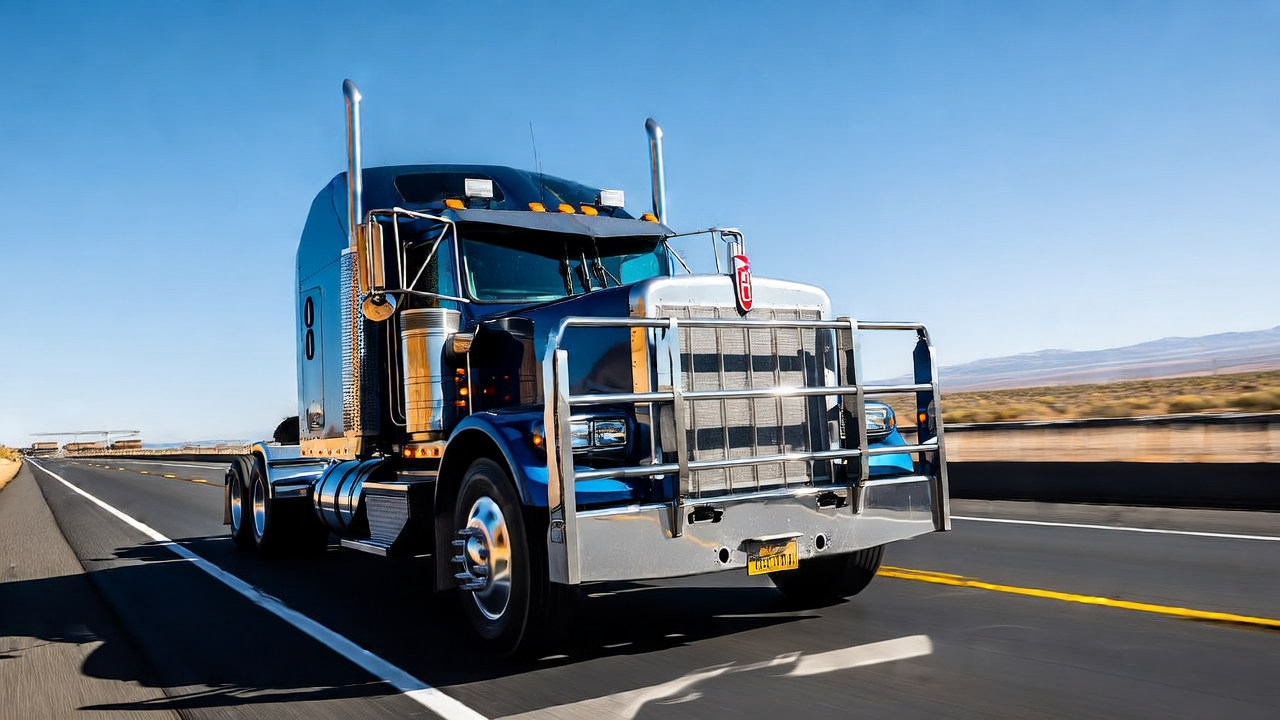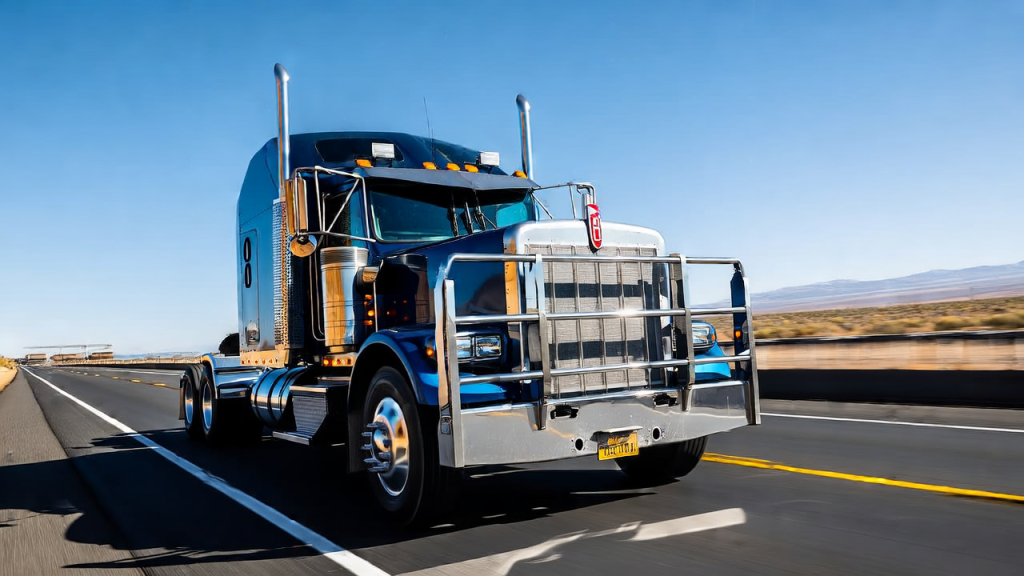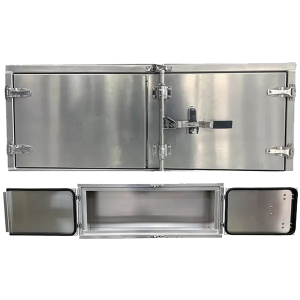
1. **Introduction: Why Moose Bumpers Are Essential for Trucks**
Every truck owner knows that the open road can be unpredictable. While we can’t control the weather or avoid potholes, there’s one threat we can prepare for: moose. In many parts of North America, these massive animals pose a real danger to both drivers and their vehicles. That’s where the moose bumper comes in—an essential piece of equipment designed not just to protect the truck, but to save lives. The rise in demand for these heavy-duty bumpers is no accident. As more truckers face wildlife collisions head-on, the need for strong, reliable bumpers has skyrocketed. But how do you go from concept to creation? From selecting the right materials to ensuring a flawless fit, producing a moose bumper is a precise, multi-step process that combines engineering with innovation. In this guide, we’ll walk you through the best practices to create a bumper that’s as tough as the terrain it’s designed for. Ready to protect your truck—and your business? Let’s dive into the essentials of bumper production.
2. **Understanding Moose Bumpers: What Makes Them Different?**
When it comes to truck safety, not all bumpers are created equal. Moose bumpers, engineered specifically to withstand collisions with large wildlife, are built to do far more than just absorb impact. Unlike standard bumpers, these robust shields are designed to protect both the vehicle’s frame and the driver’s life in extreme conditions. But what truly sets them apart? It’s the fusion of strength, precision, and specialized materials that make these bumpers a must-have for truckers in moose-heavy regions. From reinforced steel to corrosion-resistant coatings, each component is chosen to endure high-impact situations, ensuring maximum durability. More than just protection, moose bumpers offer peace of mind—turning a potential disaster into a mere inconvenience. Whether you’re building one from scratch or upgrading your existing setup, understanding the unique characteristics of these bumpers is the first step to mastering their production. Let’s explore the features that make moose bumpers essential and how to harness the right materials for your build.
3. **Step 1: Designing the Perfect Moose Bumper for Your Truck**
Designing the perfect moose bumper is no small feat. It’s about more than just slapping together some steel and calling it a day. Every curve, every joint must be meticulously planned to ensure optimal protection while maintaining the truck’s integrity. From the moment you begin brainstorming, the process is a delicate dance between strength, durability, and aesthetics. How do you ensure the bumper can withstand the sheer force of an impact, yet still look sleek and professional? The answer lies in a deep understanding of both the truck’s specifications and the unique demands of the environment it will face. A great bumper doesn’t just shield—it enhances the vehicle’s functionality. In this step, we’ll guide you through the crucial phase of designing a bumper that checks all the boxes: safety, style, and performance. Ready to build a bumper that’s as tough as the terrain it’s built for? Let’s start with the blueprint.
4. **Step 2: Choosing the Right Materials for Maximum Durability**
When it comes to crafting a bumper that can withstand the brute force of a moose collision, material selection is everything. Steel and aluminum are the two heavyweights in this battle, but which one reigns supreme? Each offers unique advantages, yet only one can be the ideal choice for a bumper that balances strength, weight, and longevity. The difference between a bumper that lasts years and one that fails under pressure often lies in the resilience of the materials used. Corrosion resistance is another critical factor—after all, a bumper exposed to the elements must fight off rust and wear. Sourcing top-tier materials from trusted suppliers isn’t just a step in the process; it’s the foundation of a durable, long-lasting bumper. So, how do you choose wisely? The right materials will not only safeguard your vehicle from damage but will ensure your investment pays off in the long run. Let’s dive into the choices that will make or break your bumper’s performance.
5. **Step 3: Manufacturing Techniques – How Moose Bumpers Are Made**
Creating a moose bumper is an art as much as it is a science. Precision is key—one wrong cut, one misaligned weld, and the entire structure could fail when it’s needed most. The manufacturing process is where theory meets practice, transforming raw materials into a shield capable of withstanding the force of a collision with a moose. CNC machines and state-of-the-art precision tools ensure every piece is crafted to perfection, with exact measurements and flawless execution. But the method of assembly—welding versus bolting—requires careful consideration. Both have their merits, but the choice can impact the bumper’s strength, longevity, and ease of maintenance. And then there’s quality control, the unsung hero of manufacturing. It’s not just about checking for defects; it’s about making sure every single bumper meets the highest standards of safety and performance. The production process isn’t just about making a bumper; it’s about making a bumper that performs when it counts. Let’s take a deep dive into how these high-tech tools and techniques come together to create the ultimate defense for your truck.
6. **Step 4: Customizing Your Moose Bumper for Unique Needs**
A moose bumper isn’t just a barrier—it’s an opportunity for customization. It’s a chance to add functionality and personality, transforming a simple piece of protection into a powerful asset. Tow hooks, light mounts, and other features aren’t just add-ons; they are game-changers for truckers who need more than just a shield. Imagine a bumper that not only deflects impacts but also serves as the perfect base for additional gear. Custom branding, with logos and colors, takes it a step further, giving you a chance to make a statement while staying functional. But customization doesn’t stop at aesthetics. The real challenge lies in ensuring that the bumper fits seamlessly across a range of truck models. A truly versatile moose bumper must accommodate various truck specifications without compromising on strength or performance. Whether you’re outfitting a fleet or building for a specific truck model, getting the customization right is a matter of precision. Let’s dive into how to take your bumper from standard to standout with these crucial adjustments.
7. **Step 5: Testing and Quality Assurance for Moose Bumpers**
Building a moose bumper is only half the battle—the real test lies in ensuring it can withstand the impact when it matters most. Strength, durability, and safety aren’t just buzzwords; they are non-negotiable requirements. Rigorous testing is the backbone of any high-quality bumper, transforming theoretical designs into real-world protection. Standard industry tests, from static load tests to impact simulations, provide crucial data on how the bumper will perform under pressure. But lab results only tell part of the story. Field tests, conducted under the very conditions the bumper will face, offer insights that simulations simply can’t capture. These tests push the bumper to its limits, ensuring it can protect your truck, your cargo, and—most importantly—your driver when an unexpected collision occurs. The goal is simple: a bumper that doesn’t just look tough but _is_ tough. Let’s explore how to test and verify your bumper’s performance, ensuring it’s ready for anything the road throws its way.
8. **Step 6: Proper Installation Techniques for Moose Bumpers**
Installing a moose bumper is no simple task—it’s about precision, preparation, and the right tools. A poorly installed bumper can compromise not only the vehicle’s performance but also its safety. From heavy-duty wrenches to specialized mounting brackets, the right equipment is essential to ensuring the bumper fits securely and functions as designed. But tools alone aren’t enough. A clear, step-by-step approach is critical. One misstep during installation can lead to costly errors or even damage to the truck. It’s not just about tightening bolts; it’s about aligning every part with meticulous care to guarantee optimal protection. As with any complex installation, there are common mistakes that even experienced installers can make, like overlooking alignment or improperly securing fasteners. Avoiding these pitfalls requires knowledge, focus, and a solid understanding of the process. This guide will walk you through everything you need to know to install your bumper with confidence, ensuring your truck is ready for anything the road—or a moose—throws its way.
9. **Step 7: Maintenance Tips to Extend the Life of Your Moose Bumper**
A moose bumper is a long-term investment, but like any valuable asset, it requires regular care to maintain its strength and effectiveness. Over time, wear and tear can take a toll on even the toughest of bumpers. Routine inspections are essential—small issues, like loose bolts or minor dents, can escalate into major problems if left unchecked. Corrosion, the silent enemy of metal, can gradually weaken the structure, leaving your truck vulnerable when it matters most. Preventing this requires vigilance and the right maintenance practices, from applying protective coatings to cleaning off debris that can trap moisture. But it’s not just about preventing damage; it’s about restoring your bumper to its prime. With the right care, your bumper can last for years, continuing to shield your truck against the unpredictable. Whether you’re preparing for harsh winter roads or simply ensuring your bumper stays in top shape, these maintenance tips will help keep your truck—and its bumper—ready for any challenge.
10. **Conclusion: The Future of Moose Bumper Production and Innovation**
The world of truck bumpers is evolving, and moose bumpers are at the forefront of innovation. As truckers face new challenges on the road, from wildlife encounters to extreme weather conditions, the demand for tougher, more advanced bumpers is growing. Emerging trends are pushing the boundaries of design, incorporating lightweight yet durable materials, cutting-edge manufacturing techniques, and custom features that make each bumper more than just a protective shield—but a vital tool for everyday use. The shift towards heavy-duty, tailor-made bumpers is not just about strength; it’s about giving truck owners the versatility they need to tackle any terrain. As these innovations continue to take shape, the future of bumper production looks brighter—and tougher—than ever. By understanding these trends and staying ahead of the curve, you can ensure that your bumper doesn’t just meet industry standards, but sets them. Ready to step into the next era of truck protection? Let’s look ahead at what the future holds for moose bumpers.




